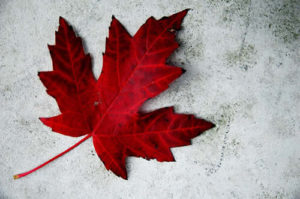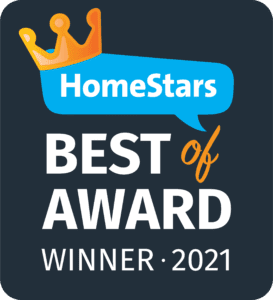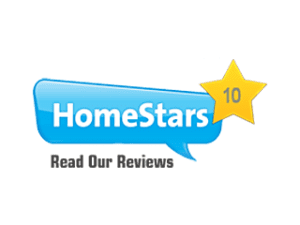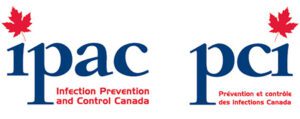What should I do if I smell of see mold in my house?
What Should I do if I smell or I see mold in my house?
It happens to more people than you may realise. They come home one day and they smell a musty or a damp odor in a certain area or, may smell something out of the ordinary. Some people may go into their basement and start smelling a musty smell.
What you smell is more than likely mold growing and releasing a gas, (as well as spores), that comes from the release of a mycotoxin, (the gas is a byproduct of mold consuming moisture, sugars and starches usually in cellulose material like cardboard, drywall backing paper and carpet backing). It is this smell that would be one of the first indicators that you have a mold problem.
The most critical step is to locate or identify the source of where water / moisture may be coming and repair it. This is because mold needs moisture / water in order to grow and what you need to do is first of all stop the water to stop the growth. If we were to skip the step of identifying and repairing the source of moisture and you only clean up the mold more than likely the mold growth will recur. If we identify the source of the moisture being related to a building foundation failure, cracks in the foundation, a burst pipe or leaking roof, a professional trade should be called in who is knowledgeable in that specific area should be consulted. In instances where the moisture source does not appear to be related to leaks, floods, structural faults or rising damp, it is most likely due to condensation.
Once you’ve identified the source of moisture / water, (or we can do this for you), and you’ve repaired it the next step is determining whether or not the removal of the mold affected area can be done without calling in a professional mold removal company such as ourselves. This will help you save money and protect your health only if;
- the mold growth was not caused by sewage back‐up or other contaminated water as this type of water / moisture may contain potential pathogens harmful to human health and the work should be performed by a professional water damage restoration firm or mold removal firm that has experience in cleaning buildings damaged by contaminated water.
- The mold growth has been determined to be a small size leak or area damaged by mold, (it should not exceed 8 square feet),
- The mold growth is due to condensation.
Remember that if you are doing this work yourself there are a number of guidelines that should be followed. You can find these guidelines on the CMHC website, (Canada Mortgage and Housing Corporation), and the U.S based website for the Environmental Protection Agency).
On hard surfaces, such as countertops and furniture, you will need to use a detergent and water to wash mold off and then dry completely. The use of biocides or chemical disinfectants is not recommended as these may be hazardous to occupants. (when we use a disinfectant we use a product that originates from the herb thyme). Moldy porous or absorbent materials, such as ceiling tiles, drywall / plaster and carpeting should be removed and replaced. With respect to carpeting we have found that mold usually gains a foothold on the backing parts of carpeting and that’s because mold tends to grow on organic backing materials like jute. Some of the newer carpet products have a synthetic backer which discourages mold growth.
Please insure that if you are going to do this yourself you wear the proper personal protective equipment and restrict people from the area you are doing the work. Remember that as soon as you start moving the mold affected areas around you are disturbing the mold and it’s releasing spores into the air. Therefore you need to wear the properly rated and approved respirators for this type of job. We recommend, at a minimum, wearing a respirator with new unused P100 filters. Wear rubber or nitrile gloves and a Tyvek suit. Do not conduct this work if you have any kind of health issues or concerns. Inform your doctor as well before commencing the work that you intend to remove mold and proceed only if you receive clearance from your doctor.
If the area exceeds 8 square feet or you cannot locate the problem area(s) please give us a call. And please be careful who you contact to do the inspection and / or removal. There are a number of companies and individuals who do not have the proper training and / or who do not understand the implications to you should they attempt to remove mold improperly. Once mold is, “out of the bottle”, so to speak it is very difficult to put it back in. Cross-contamination of mold in a home is a problem that only a few experienced companies like ours completely understands how to avoid.
So I understand I have a mold problem that is large enough to impact my family’s health. What is the next step?
To us, it is very important the mold contamination be dealt with quickly right after the water / moisture source has been repaired. However, sometimes it is our work that helps you identify these problem areas. For instance, in problem basements the problem is usually a leaky foundation. How big the foundation problem is cannot usually be understood until we remove the wall areas where mold has been identified.
In most cases however the source of the problem has been identified and fixed once we arrive to deal with the mold issue. We then remove contaminated materials and then disinfect / encapsulate the areas affected and exposed.
All this is done in a totally contained area separated from the interior of your home. This is to prevent cross-contamination and to clean and scrub the air around the contamination, (we use HEPA air scrubbers and negative air machines similar to cleaning methods used in hospitals).
How do you inspect my home for mold and what do you look for as a professional mold inspection and removal company?
How do we typically inspect your home to determine whether or not you have a mold issue?
The technology we use include infrared camera systems, (by FLIR), moisture meters and equipment used to verify indoor air quality such as air sampling pumps and hygrometers to verify relative humidity levels. Our first step is to perform an inspection that checks building materials and spaces for visible mold growth, signs of moisture damage indicating a history of water leaks, elevated humidity levels, and/or condensation. Any occupant complaints will be noted, as well as any musty or moldy odors.
We particular cases we review the various components of the building’s ventilation system with particular emphasis on the filters, cooling coils (if present), the fan chamber and any internal insulation. If mold growth or moisture problems are found, the air pressure differentials between the area of growth and surrounding areas will be determined. The location of the mold and moisture damage will be characterized to determine its impact on the building and its occupants. The risk of potential health consequences varies depending upon the amount of visible mold/moisture damage and the degree of isolation from the occupied space.
Exposure risk from greatest to least would be:
- growth on surfaces exposed to occupied space
- on interior walls or in floor cavities
- in exterior walls with poor air barriers
If the mold damage is in the ventilation system, immediate steps are required to stop the spread of contamination. If the contamination is on the surface of walls, ceilings or floors exposed to the occupied space, prompt steps are required to contain the mold-damaged areas because what is visible is just a fraction of the total.
Another question is, does testing my home on an annual basis make sense?
You do not have to test your home for mold contamination on an annual basis. Please just keep an eye out for evidence of water leaks or water damage and / or visible mold growing as a primary step in staying on top of potential issues. Not only from a mold growth perspective but from a home ownership standpoint, it make sense that you maintain and review your home personally for other unrelated issues as well. A gram of prevention is worth more than a kilogram of cure so to speak.
However, if you do start to smell something that you think may be mold and you can’t find anything that would be the time to call us in. We are skilled at finding evidence of water damage and visible mold growth however sometimes it may be something else. We conduct air sampling to insure you do not have elevated mold spore counts in your air when compared to outside air. We use an independent lab that will provide an unbiased picture of what you are breathing. Once these types of tests are done you can feel confident that mold levels are within acceptable levels. It is an important step in determining whether or not you need to spend additional money on a problem that may not be mold related.
When should I arrange for an air sample?
Air, surface or bulk sampling may not be necessary, depending on the goal of our investigation. If visible mold is present, then it needs to be removed, regardless of what species are present or whether or not samples have been collected. In situations where visible mold is present and there is a need to have the mold identified, surface or bulk sampling may be warranted. In specific instances, such as cases where health concerns are an issue, litigation is involved or the sources of contamination is unclear, sampling may be considered as part of a building evaluation.
If mold is suspected but not visibly detectable after a thorough inspection, then microbial air sampling conducted in accordance with guidance documents may reveal evidence of mold amplification or reservoirs indoors, particularly of mold that is considered “hidden” behind walls and other building structures. If mold is being removed and there is a question about how far the colonisation extends, then surface or bulk sampling, in combination with moisture readings, may be useful. Sampling for airborne mold spores can indicate whether the mix of indoor molds is “typical” of the outdoor mix or, conversely, “atypical” or unusual at the time of sampling.
Any sampling that does occur must be performed by professionals such as the personnel at Maple Leaf Mold who are experienced with mold issues and familiar with current guidelines and, if applicable, local regulations. If samples are collected, regardless of the purpose, the results should help answer a clear question. Sampling without a specific purpose greatly increases the chances of generating useless data.
Why are there no standards for mold exposure?
Health hazards from exposure to environmental molds and their metabolites relate to four broad categories of chemical/biological attributes:
- irritants
- allergens
- toxins
- pathogens (rarely)
Different mold species may be more or less hazardous with respect to any or all of these categories. In addition, individual risks from exposure to a particular mold species may vary depending on a number of factors.
Uncertainty is further complicated by a lack of information on specific human responses to well-defined mold contaminant exposures. In combination, these knowledge gaps make it impossible to set simple, meaningful exposure standards for molds and related contaminants.
With no standards, how do I interpret my sampling results?
A useful method for interpreting microbiological results is to compare the kinds and levels of organisms detected in different environments. Usual comparisons include indoors versus outdoors, or complaint areas versus non‐complaint areas. Specifically, in buildings without mold problems, the qualitative diversity (types) of airborne fungi indoors and outdoors should be similar. Conversely, the dominating presence of one or two kinds of fungi indoors, coupled with the absence of the same kind of fungi outdoors, may indicate a moisture problem and degraded air quality.
Also, the consistent presence of certain fungi, such as Stachybotrys chartarum, Aspergillus versicolor, or various Penicillium species, over and beyond background concentrations may indicate the occurrence of a moisture problem and a potential atypical exposure. Generally, indoor mold types should be similar to, and airborne concentrations should be no greater than, those found outdoors and in non-complaint areas. Analytical results from bulk material or dust samples may also be compared to results of similar samples collected from reasonable comparison areas.
Comparisons of total bacterial levels indoors versus outdoors may not be as useful as with fungi, since natural bacteria reservoirs exist in both places. Comparisons of the specific types of bacteria present, excluding those of known human origin, can help determine building-related sources.
Does mold removal always require isolation/containment?
Mold remediation should always require some level of isolation of materials or containment. The lower level of containment or isolation involves sealing removed moldy materials in a plastic bag for disposal. Local‐area or full‐area containment decisions should be made based on the size of the area of mold growth and moisture damage, along with the potential for occupant exposure or building contamination without containment. These decisions should be based on an understanding of the full scope of mold contamination, including both visible and possible hidden mold sources.
Are biocides useful or required in remediation projects?
Biocides are disinfectant chemicals used to kill germs. In most mold remediation projects, biocides are not a substitute for thorough cleaning. Biocides are of limited use in remediation of indoor mold contamination for two main reasons:
- Because applications of biocides are variable, these treatments do not always remove allergens that can lead to allergies in sensitive individuals, nor do they remove other metabolites from mold that can cause adverse reactions in some people. Even though the application of biocides may kill mold spores, the only way to remove the allergens and other metabolites is through the physical elimination of mold and moldy materials by thorough cleaning or removal.
- Commonly used biocides do not effectively kill molds. For example, active fungal growth on a surface may produce a spore density of 1 million spores per square inch. Treating this site with a biocide that has an effectiveness of 99.999% would still leave an estimated 10 viable spores per square inch. As such, mold growth may recur if the underlying moisture problem is not resolved.
Biocidal treatments are indicated only when the contaminant is one of the few fungi, such as Aspergillus fumigatus, that is known to cause human infection. This is particularly important in healthcare facilities or other places with occupants who have impaired immune systems or who may be more susceptible to infections.
What are the knowledge gaps concerning mold exposure and its health effects?
Chief among the knowledge gaps are defining how mycotoxins affect human health and the health risks associated with mycotoxins, microbial volatile organic compounds, allergen and glucan exposures.
The causes of individuals’ susceptibility to infectious fungi are relatively well understood. Conversely, the mechanisms responsible for allergic sensitization, contact dermatitis, hypersensitivity pneumonitis, and inhalation fevers vary from incompletely characterized to entirely unknown. Predisposing host factors influence individual susceptibility to environmental exposures.
The lack of meaningful exposure limits for most indoor air quality contaminants is a major obstacle to establishing regulatory standards for individual exposure to airborne contaminants. The same is certainly true for molds. Until microbiological methods for demonstrating mold concentrations in the environment are standardized and reproducible, epidemiological studies necessary to determine dose‐response can only suggest association, not cause and effect, with respect to mold exposures and health effects.

Maple Leaf Mold Inc. is a certified mold / asbestos removal and biological disinfection / air analysis company located in Toronto that uses certified IICRC technicians for all testing and remediation projects.
We are a professionally licensed firm experienced in testing, verifying and removing Mold / Asbestos / Lead and other environmental contaminants as well as providing disinfection services to control and kill biological contaminants.
Call 416-254-7256 to talk with us about your issue anytime.



